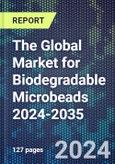Plastic microbeads are a multi-billion dollar market, with applications in markets ranging from cosmetics to oil & gas. However, their use is limited in some applications, and regulatory curbs regarding use are likely to increase. Replacement of plastic microbeads with biodegradable and non-toxic alternatives is increasingly important and the market will grow to meet both regulatory demands and increased use of microbeads in healthcare (e.g. pharmaceuticals and drug delivery), food and beverages), paints and coatings, and cosmetics and personal care sectors.
Microplastics can be separated into primary and secondary microplastics. Primary microplastics are mostly thermoset and thermoplast plastic materials that have been added to products to fulfil a certain function. For example, these synthetic non-degradable polymers are used in personal care and cosmetics for exfoliation, film formation, sorbents for delivering active ingredients, skin conditioning etc.. While some of these microbeads are clearly visible, others are in the micro- or nanometre range. Personal care and cosmetic products since the 1990s have been increasingly formulated to include microbeads to improve their abrasive and other qualities. Many companies have curtailed their use or pivoted to natural alternatives, but it still represents a sizeable global market.
Secondary microplastics are formed by the fragmentation of macroplastics (>5 mm) by processes such as weathering of plastic litter and paint layers, as well as wear of car tyres and are the main focus of environmental concerns. However, primary microplastics also raise issues and are a target for regulation. Therefore the developments of biobased and natural alternatives has grown in recent years.
The Global Market for Biodegradable Microbeads 2024-2035 offers an in-depth analysis of the market dynamics, key players, and future opportunities within this rapidly evolving sector, covering the period from 2017 to 2035. The report examines the current state of the microplastics market, providing a detailed classification of microplastics and their applications across various industries, and the potential of biodegradable materials as replacements for conventional microplastics. Biodegradable microbead materials types covered include natural polymers, polysaccharides, proteins, and polyesters. The report assesses the likelihood of these materials penetrating different sectors, such as personal care, cosmetics, agriculture, paints & coatings, detergents, oil & gas, and medical products.
One of the key highlights of this report is its comprehensive analysis of microplastic usage and the potential for biodegradable alternatives across these sectors. By providing a detailed breakdown of the current market size and forecasts for both primary microparticles and biodegradable microbeads, segmented by sector and region (in tonnes and USD), the report enables stakeholders to identify lucrative opportunities and make informed strategic decisions.
Moreover, the report features profiles of leading producers and developers of biodegradable microbead materials, offering valuable insights into their product portfolios, production capacities, and growth strategies. This information is crucial for companies seeking to establish partnerships, collaborate on research and development, or stay ahead of the competition in this dynamic market. Companies profiled include Ajinomoto Co., Inc., Andritz Oy, Asahi Kasei Corporation, BASF, Bioweg, CELLiCON, CH-Bioforce Oy, Croda, Daicel Corporation, Green Science Alliance, Lactips, LignoPure GmbH, Naturbeads and TerraVerdae BioWorks.
As concerns about the environmental impact of microplastics continue to mount, the demand for sustainable and biodegradable alternatives is expected to soar. This report serves as an essential resource for companies, researchers, and investors looking to capitalize on this trend and contribute to a greener future. By providing a comprehensive understanding of the market landscape, key players, and growth prospects, this report empowers stakeholders to navigate the challenges and seize the opportunities presented by the global shift towards eco-friendly microbeads and microplastic alternatives.
This product will be delivered within 1-3 business days.
Table of Contents
1 REPORT METHODOLOGY
Companies Mentioned (Partial List)
A selection of companies mentioned in this report includes, but is not limited to:
- Ajinomoto Co., Inc.
- Andritz Oy
- Asahi Kasei Corporation
- BASF
- Bioweg
- CELLiCON
- CH-Bioforce Oy
- Croda
- Daicel Corporation
- Green Science Alliance
- Lactips
- LignoPure GmbH
- Naturbeads
- TerraVerdae BioWorks
Methodology

LOADING...








